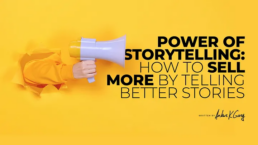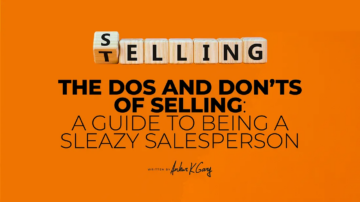As a business owner, you know that selling is crucial to your success. And to sell more, you need to connect with your customers on a deeper level. One of the most effective ways to do that is through storytelling. Stories have the power to engage, inspire, and influence people. And when you tell better stories, you can sell more. In this post, we’ll explore the power of storytelling and how you can use it to boost your sales.
Why Storytelling Works
Humans are wired to connect through stories. From the earliest days of human history, we’ve shared stories to make sense of the world around us and to connect with each other. Stories engage our emotions, capture our attention, and help us remember information. When you tell a story, you create a personal connection with your audience. They become invested in your story and are more likely to remember it and act on it.
In addition to connecting emotionally, stories also help us make sense of complex information. When you present data or facts alone, it can be difficult for people to understand and remember. But when you wrap that information in a story, it becomes more relatable and memorable. Stories also help to simplify complex ideas and make them more accessible to a wider audience.
Finally, stories are persuasive. When you tell a story, you’re not just presenting information, you’re making a case. Stories can help you convince people to see things from your perspective, to take action, or to change their behavior.
How to Tell Better Stories
Telling better stories isn’t just about being a good storyteller. It’s about understanding your audience and tailoring your stories to their needs and interests. Here are some tips for crafting effective stories:
Start with a hook: Grab your audience’s attention from the start with a compelling opening that piques their curiosity.
Know your audience: Understand who your audience is, what their needs and interests are, and what motivates them. Tailor your story to those factors.
Keep it simple: Focus on one main point or idea in your story. Don’t overload your audience with too much information or too many messages.
Make it personal: Use examples and anecdotes that your audience can relate to. Personal stories are more memorable and more likely to connect emotionally.
End with a call to action: Use your story to motivate your audience to take action. Whether it’s to buy your product, donate to your cause, or sign up for your newsletter, make sure your story ends with a clear call to action.
How to Use Stories to Sell More
Now that you know why storytelling works and how to tell better stories, it’s time to put that knowledge into action. Here are some ways to use storytelling to sell more:
Use stories in your marketing: Whether it’s in your advertising, your website copy, or your social media posts, use stories to capture your audience’s attention and make them care about your brand.
Use stories in your sales pitches: When you’re trying to close a sale, use stories to make your product or service more relatable and memorable.
Use stories in your customer service: If you’re trying to resolve a customer’s problem, use stories to help them understand how you can help and why it’s important.
Use stories to build your brand: Share stories about your company’s history, its mission, and its values to help your audience connect with your brand on a deeper level.
Telling better stories can help you sell more. By connecting with your audience emotionally, simplifying complex information, and persuading people to take action, stories can be a powerful tool for any business owner. So the next time you’re trying to sell, remember the power of storytelling and use it to your advantage.





